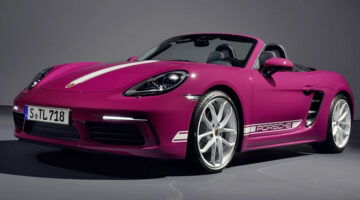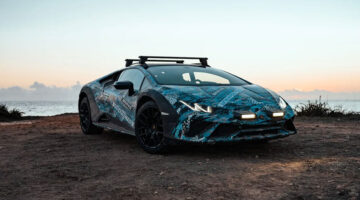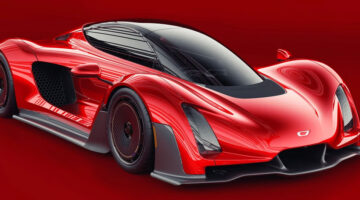As mentioned earlier, the rotary ‘Map’ switch located on the steering wheel allows you to select from five driving modes – E-Power, Hybrid, Sport Hybrid, Race Hybrid and Hot Lap – which control the full spectrum of the Spyder’s performance, from electric-only to full maniac. There’s a lot to take in on the six lap run of the Valencia circuit, which is frustratingly all the time Porsche have allotted per attending journo.
With that in mind I’m fully focussed as I drop into the driver’s seat. I twist the ignition key and wait in anticipation for the 918 to fire up, but nothing happens. I start searching for a starter button that I may have missed, but there isn’t one. After querying a Porsche minder I soon realise that the car is on, but as it always gets going in pure electric mode the only sign that it’s alive is a light in the dash. There is absolutely zero noise, no whirr of motors, no beeping noises. So far, so bizarre.
The tiny T-lever that selects Drive reminds me of the system in the earliest flappy paddle-equipped Ferraris. Push the lever down, release the brake and the 918 starts to roll down the Valencia pitlane in silence, the only audible noise coming from the bespoke Michelin tyres rolling over the smooth tarmac and a bit of clunking and whirring from the electric motors. I can also hear the carbon brakes making a surprisingly loud whistling noise as discs meet pads, but that’s likely due to the regenerative braking working to help charge the batteries.
It’s a really odd sensation driving a car that looks this wild in complete electric silence, but that’s quickly forgotten as I press the throttle towards the bottom of its travel in an attempt to hang on to the new 911 Turbo S pace car that is ahead, and being driven to within an inch of its life by one of Porsche’s hotshoes. The V8 explodes into life and fills the cabin with a noise not dissimilar to an angry swarm of buzzing hornets, courtesy of the upward facing exhaust pipes sitting just behind my head. I’m now in Hybrid mode and it’s immediately clear that all of the systems are impressively integrated. Apart from the very obvious noise the moment the V8 comes to life, you’re unaware of what contribution the batteries are making to your progress, just that the car moves with the ease and muscularity of a car with a big, torquey engine and that it’s pretty rapid. Although not shockingly so.
Each turn of the Map switch awakens and intensifies the Spyder, sharpening throttle maps and shift times as normal, but also giving more (and more) of the battery power more of the time. With each turn of the rotary switch the noise of the engine becomes increasingly feral, culminating with Hot Lap mode that feels positively unhinged, as pressing the red button drains every last bit of power the batteries have to give. On the straights I’m having to back out of the power to avoid a high speed shunt with the Turbo S ahead, but this still doesn’t feel like a 900bhp car. Don’t get me wrong, the 918 is a devastatingly quick car, as highlighted by the stunning set of acceleration numbers attached to it; 0-100kph in 2.6sec, 0-200kph in 7.3sec, 0-300kph in 20.9sec and a top speed of 345kph are all pretty spectacular, but from behind the wheel it feels more Mclaren 12C quick than Bugatti Veyron bonkers.
Nevertheless, straight line speed isn’t what makes a great drivers car, it’s what happens in the corners that really matters and the 918 acquits itself quite well in that department. The steering is beautifully weighted and gives me a pretty good idea of what’s going on with the front tyres, although the steering lacks the absolute clarity of the very best Porsche racks and does feel a bit filtered and synthetic, which makes sense as in many ways it is. Minor niggles aside, I certainly feel connected with what’s happening beneath me and believe me there is plenty going on. By controlling the electrical power to the front and rear motors, the car can instantly vector its own torque. Plus there’s four-wheel steering keeping me stable. As soon as the rear wheels spin up, the systems are designed to send more torque to the fronts, meaning it isn’t a natural hooligan.



